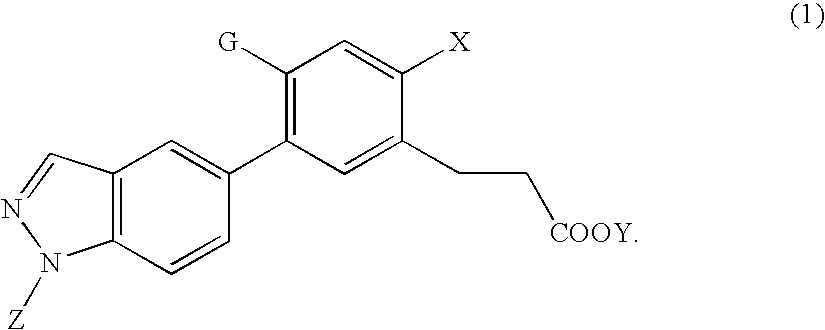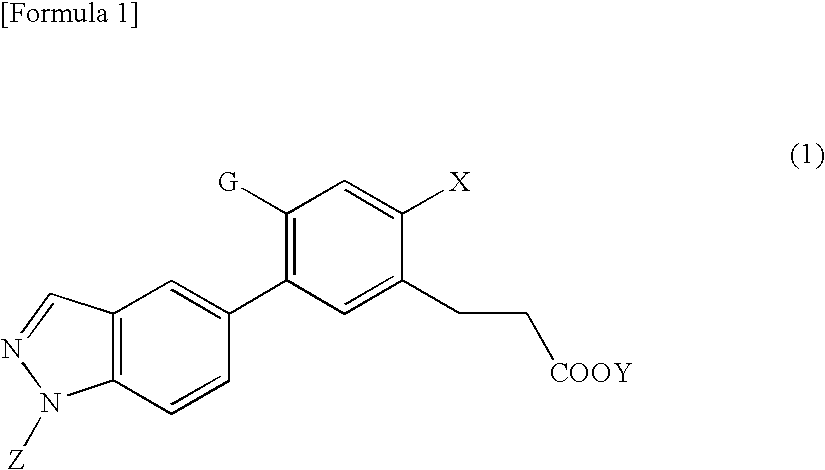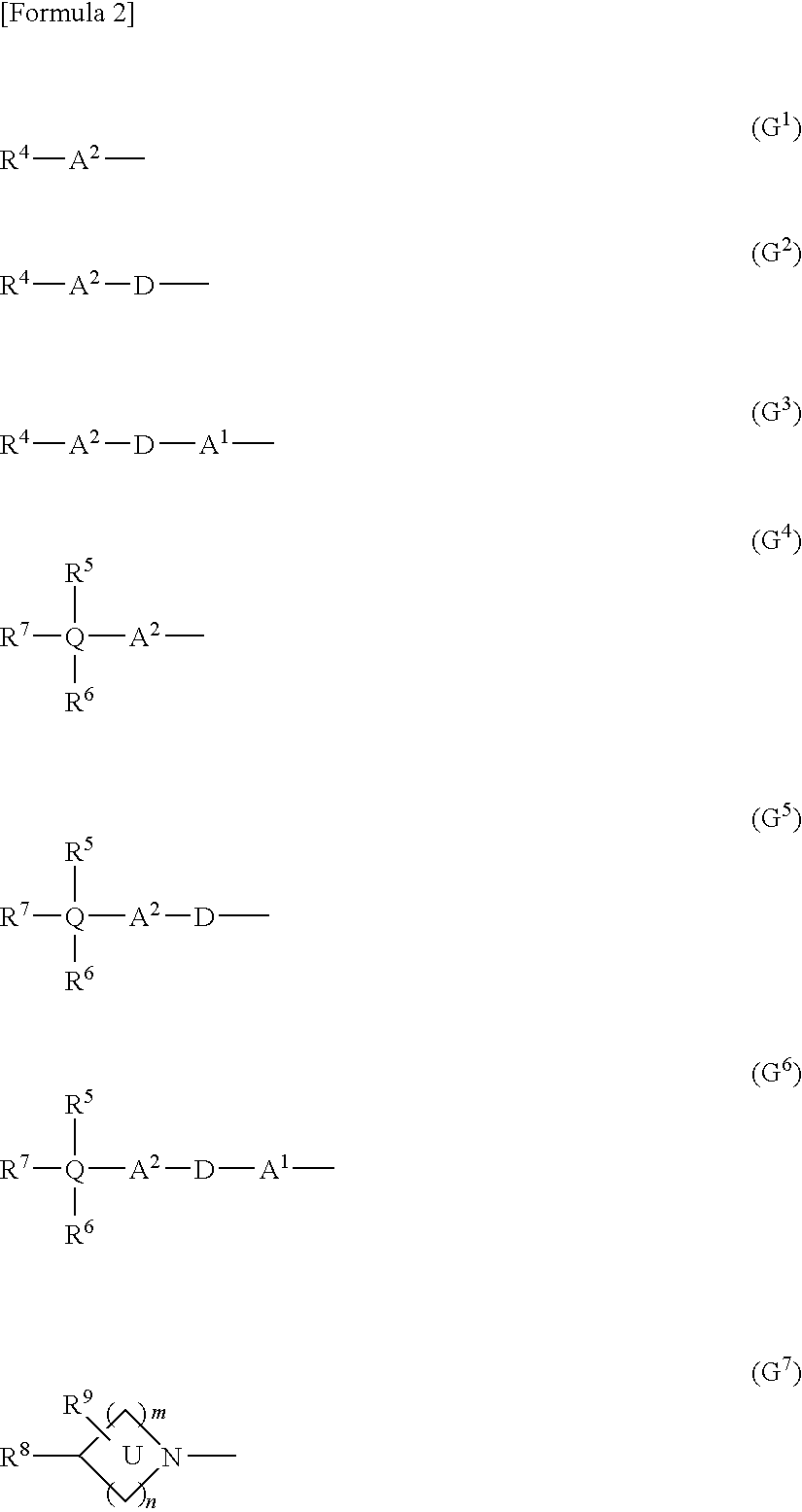Phenylpropionic acid derivative and use thereof
a technology of phenylpropionic acid and derivatives, applied in the field of new phenylpropionic acid derivatives, can solve the problems of severe side effects, unsatisfactory drug availability, severe side effects, etc., and achieve superior prophylactic and/or therapeutic effect, superior inhibitory activity, and high safety
- Summary
- Abstract
- Description
- Claims
- Application Information
AI Technical Summary
Benefits of technology
Problems solved by technology
Method used
Image
Examples
reference example 1-1
Synthesis of 7-hydroxychroman-2-one (Intermediate 1)
A solution of hydroxycoumarin (2.0 g, TCI) in anhydrous THF (50 ml) was added with 10% palladium hydroxide / activated carbon (1.0 g, WAKO), and stirred at room temperature for 2 hours under hydrogen atmosphere. The atmosphere was replaced with nitrogen gas, and then the insoluble matters were removed by filtration through Celite. The solvent was evaporated under reduced pressure to obtain the title compound (2.0 g).
(LCMS: 163.0 (MH.sup.-), Retention time: 3.03 minutes, LCMS condition: A)
example 1-1-2
Synthesis of 3-(2-hydroxy-4-methoxy-5-(1-methyl-1H-indazol-5-yl)phenyl)propanoic acid
[Step A] Synthesis of 6-bromo-7-hydroxychroman-2-one (Intermediate 2)
A solution of Intermediate 1 (20 g) in acetonitrile (50 ml) was added with N-bromosuccinimide (20 g, WAKO) under ice cooling, and stirred for 10 minutes under ice cooling, and then stirred at room temperature for 1 hour. The reaction mixture was concentrated under reduced pressure, and then recrystallized from acetonitrile to obtain the title compound (15 g).
(Intermediate 2, LCMS: 240.9 (MH.sup.-), Retention time: 3.25 minutes, LCMS condition: B)
[Step B] Synthesis of 6-bromo-7-methoxychroman-2-one (Intermediate 3)
A solution of Intermediate 2 (5.0 g) in THF (20 ml) was added with diethyl azodicarboxylate (4.1 g, Ald), triphenylphosphine (8.0 g, WAKO), and methanol (990 .mu.l, KANTO), and stirred for 4 hours. The reaction mixture was added with water (100 ml) and dichloromethane (20 ml.times.2) and extracted, the organic layer was su...
example 1-1-1
Synthesis of methyl 3-(2-hydroxy-4-methoxy-5-(1-methyl-1H-indazol-5-yl)phenyl)propanoate
A solution of Example Compound 1-1-2 (3.3 g) in methanol (50 ml) was added with TsOH (200 mg, WAKO), and stirred at 60.degree. C. for 1 hour under nitrogen atmosphere. The reaction mixture was added with water (30 ml), and ethyl acetate (30 ml.times.2) for extraction, and then washed with saturated aqueous sodium hydrogencarbonate, the organic layer was dried, and then the solvent was evaporated under reduced pressure. The residue was purified by column chromatography (Yamazen, n-hexane:ethyl acetate=3:1), and the solvent was evaporated under reduced pressure by using a rotary evaporator to obtain the title compound (3.3 g).
PUM
| Property | Measurement | Unit |
|---|---|---|
| temperature | aaaaa | aaaaa |
| time | aaaaa | aaaaa |
| time | aaaaa | aaaaa |
Abstract
Description
Claims
Application Information
 Login to View More
Login to View More - R&D
- Intellectual Property
- Life Sciences
- Materials
- Tech Scout
- Unparalleled Data Quality
- Higher Quality Content
- 60% Fewer Hallucinations
Browse by: Latest US Patents, China's latest patents, Technical Efficacy Thesaurus, Application Domain, Technology Topic, Popular Technical Reports.
© 2025 PatSnap. All rights reserved.Legal|Privacy policy|Modern Slavery Act Transparency Statement|Sitemap|About US| Contact US: help@patsnap.com



